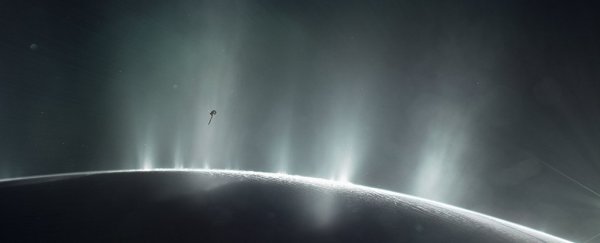As humans have ventured further from our home planet, we have sought other living organisms, proof that we're not alone. We, of course, haven't found any yet.
But a growing amount of data has given us a better sense of where in the solar system we should look more carefully.
Seth Shostak, a senior astronomer at the Search for Extraterrestrial Intelligence (SETI) Institute, suspects that there are multiple nearby places where some form of microbial life is likely to exist.
"There are at least seven other places in our own solar system, so kind of next door places you could get to with a rocket, that could have microbial life," Shostak told Futurism.
He also thinks that we'll possibly spot these alien microbial life "sooner" than we could find intelligent extraterrestrial life.
Can you guess what these seven places are?
The Red Planet and Jupiter's Moons
Mars is an obvious one, Shostak said. It's possible that lower life forms are hidden under the dirt of the Red Planet, 30 metres (100 feet) or so below the surface where some liquid water might exist.
Aside from Mars, three of Jupiter's moons are candidates.
One is Europa, which has subsurface oceans capable of hosting microbial life. These would survive off of hot spots at the bottom, which are like "little mini volcanoes and that would give you energy for life," said Shostak.
The others are, presumably, Ganymede - the largest moon in the whole solar system and is home to a body of water similar to the Earth's oceans, but buried under a thick crust of ice - and Callisto, which has an ocean and an atmosphere.
Saturn's Moons and Our Favorite Non-Planet
Then, there are two moons around Saturn - thanks, Cassini! - that could potentially harbour some form of life.
One is Titan, which has liquid lakes made of natural gas.
Enceladus presents even more favourable conditions, Shostak told Futurism. It might be easier to find microbial life there because "it's shooting geysers into space. So you don't have to land. You don't have to drill," he explained.
"You just go grab some of those geyser gunk and bring it back to Earth and maybe you'll find aliens."
Lastly, there's Pluto.
"Under the surface of Pluto there could be pockets of liquid water," Shostak said. "Any place [where] you have liquid water - liquid of any kind - maybe have microbes."
He did make a clarification, though: "I'm not saying there are Plutonians."
These seven have the right organic processes that could serve as food or a source of energy as well as some form of liquid - and not necessarily just water - to sustain microbial life.
"You have something that gives you food, fundamentally, and the opportunity to create life, which after all is just organic chemistry."
Asked about when we'll find intelligent alien life, Shostak said he believes it's going to be within the next two decades.
"There's a lot of real estate out there, right? There are a trillion planets in the Milky Way. We can see a trillion other galaxies, each with a trillion planets. If they're not out there, then all these people behind us are really special."
This article was originally published by Futurism. Read the original article.
